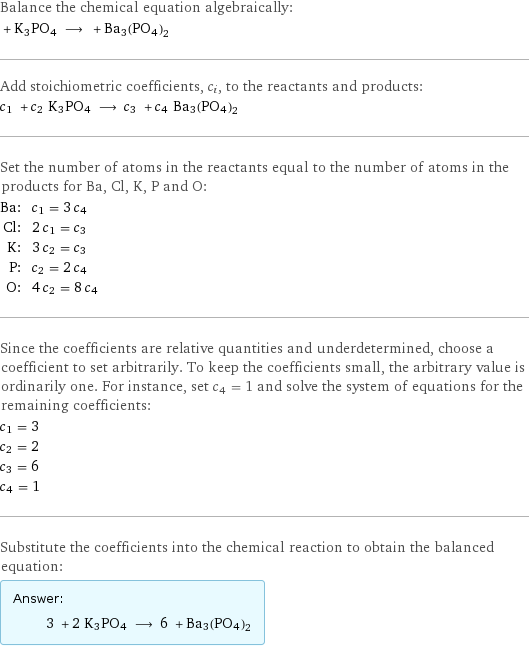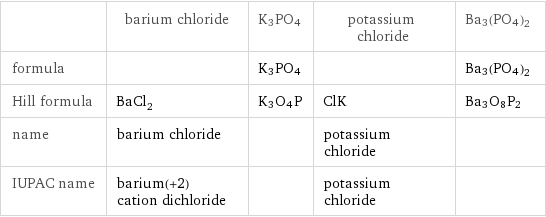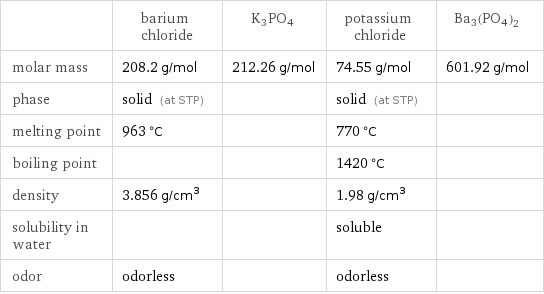Input interpretation

barium chloride + K3PO4 ⟶ potassium chloride + Ba3(PO4)2
Balanced equation

Balance the chemical equation algebraically: + K3PO4 ⟶ + Ba3(PO4)2 Add stoichiometric coefficients, c_i, to the reactants and products: c_1 + c_2 K3PO4 ⟶ c_3 + c_4 Ba3(PO4)2 Set the number of atoms in the reactants equal to the number of atoms in the products for Ba, Cl, K, P and O: Ba: | c_1 = 3 c_4 Cl: | 2 c_1 = c_3 K: | 3 c_2 = c_3 P: | c_2 = 2 c_4 O: | 4 c_2 = 8 c_4 Since the coefficients are relative quantities and underdetermined, choose a coefficient to set arbitrarily. To keep the coefficients small, the arbitrary value is ordinarily one. For instance, set c_4 = 1 and solve the system of equations for the remaining coefficients: c_1 = 3 c_2 = 2 c_3 = 6 c_4 = 1 Substitute the coefficients into the chemical reaction to obtain the balanced equation: Answer: | | 3 + 2 K3PO4 ⟶ 6 + Ba3(PO4)2
Structures

+ K3PO4 ⟶ + Ba3(PO4)2
Names

barium chloride + K3PO4 ⟶ potassium chloride + Ba3(PO4)2
Chemical names and formulas

| barium chloride | K3PO4 | potassium chloride | Ba3(PO4)2 formula | | K3PO4 | | Ba3(PO4)2 Hill formula | BaCl_2 | K3O4P | ClK | Ba3O8P2 name | barium chloride | | potassium chloride | IUPAC name | barium(+2) cation dichloride | | potassium chloride |
Substance properties

| barium chloride | K3PO4 | potassium chloride | Ba3(PO4)2 molar mass | 208.2 g/mol | 212.26 g/mol | 74.55 g/mol | 601.92 g/mol phase | solid (at STP) | | solid (at STP) | melting point | 963 °C | | 770 °C | boiling point | | | 1420 °C | density | 3.856 g/cm^3 | | 1.98 g/cm^3 | solubility in water | | | soluble | odor | odorless | | odorless |
Units
